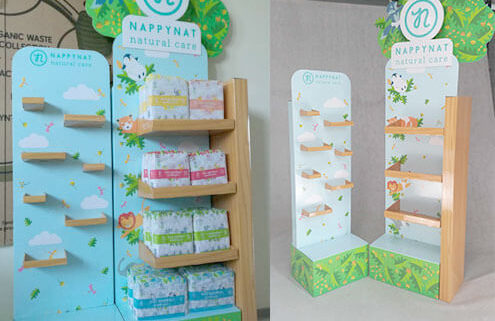How to Design Cardboard Displays for Different Store Layouts
Designing cardboard displays that work across various store layouts is essential for maximizing their effectiveness. Every retail environment is unique, and your display should seamlessly integrate with the space while showcasing your products in the best possible way of how to design cardboard displays. Whether it’s a compact convenience store or a sprawling supermarket, thoughtful design ensures your displays stand out and drive sales.
Here’s how to tailor your cardboard display designs to fit different store layouts effectively.
1. Understand the Store’s Layout and Traffic Flow
Before designing a display, analyze the store’s layout and traffic patterns.
- High-Traffic Areas: Focus on entrances, checkout counters, and end caps where customers are most likely to see your display.
- Pathways and Aisles: Consider the width of aisles to avoid blocking customer movement while still capturing attention.
- Dead Zones: Identify less frequented areas where your display could draw traffic and improve store flow.
Understanding how customers navigate the store ensures your display is placed strategically for maximum impact.
2. Choose the Right Display Type for the Space
Different store layouts call for different types of displays. Select the style that complements the space:
- Floor Displays: Perfect for larger stores like supermarkets, these freestanding units can hold a high volume of products and create a commanding presence.
- Countertop Displays: Ideal for small retail spaces or convenience stores, these compact units sit on checkout counters, promoting impulse buys.
- End Cap Displays: Designed for aisle ends, these displays maximize visibility in high-traffic areas of medium-to-large stores.
- Pegboard Displays: Suitable for stores with limited shelf space, these displays allow products to hang neatly, optimizing vertical space.
Tailoring the display type to the store layout ensures your products are showcased effectively.

3. Optimize Display Size and Dimensions
The size of your display should align with the available space in the store while ensuring functionality.
- Compact Stores: For smaller stores, use slim, lightweight designs that fit tight spaces without overwhelming the environment.
- Large Retailers: In bigger stores, oversized displays can make a bold statement and accommodate more products.
- Adjustable Designs: Consider modular displays that can be resized or reconfigured to fit different layouts, providing flexibility for various store types.
The right size ensures your display is both practical and visually appealing.
4. Design for Easy Assembly and Mobility
Retail staff often handle the assembly and placement of displays, so ease of use is crucial.
- Simple Assembly: Use interlocking tabs and clear instructions to make setup quick and hassle-free.
- Lightweight and Portable: Ensure displays are easy to move, allowing retailers to reposition them as needed to optimize their layout.
- Pre-Filled Displays: For certain stores, shipping displays pre-filled with products can save time and effort, ensuring consistency in presentation.
User-friendly designs make your displays more appealing to retailers, increasing their likelihood of use.
5. Incorporate Branding and Messaging
Clear, attractive branding is vital to catching customers’ eyes, regardless of the store layout.
- Bold Graphics: Use vibrant colors and large text to ensure visibility from a distance.
- Consistent Branding: Incorporate your logo, brand colors, and product messaging to reinforce your identity.
- Localized Messaging: Tailor your design for specific markets or promotions to connect with the local audience.
Effective branding ensures your display grabs attention and communicates your message quickly in busy retail environments.
6. Consider Store-Specific Needs and Challenges
Different stores have unique requirements that should influence your display design.
- Space Constraints: In crowded stores, focus on vertical displays or wall-mounted units to save floor space.
- Product Categories: Design displays that fit seamlessly within the store’s product organization, such as pairing snack displays with beverage aisles.
- Durability: In high-traffic environments, use reinforced cardboard to ensure the display withstands heavy use.
Adapting to the store’s specific needs ensures your display remains functional and effective.
7. Test Your Display in Different Settings
Before rolling out your display, test it in a variety of store layouts to ensure versatility.
- Pilot Programs: Partner with select stores to gather feedback on the display’s performance.
- Adjustments: Use the feedback to refine your design, ensuring it meets the needs of different retailers.
- Durability Testing: Evaluate how well the display holds up under real-world conditions, such as customer interaction and restocking.
Testing ensures your display is optimized for diverse retail environments.
Conclusion
Designing cardboard displays for different store layouts requires careful planning and adaptability. By understanding the space, choosing the right display type, and incorporating user-friendly features, you can create displays that thrive in any retail setting. With the right approach, your displays will not only fit seamlessly into various layouts but also drive sales and reinforce your brand identity.
Looking for expertly designed cardboard displays that suit any store layout? Packwins specializes in creating customized solutions to meet your retail marketing needs. Let’s design a display that delivers results for your brand.




Leave a Reply
Want to join the discussion?Feel free to contribute!